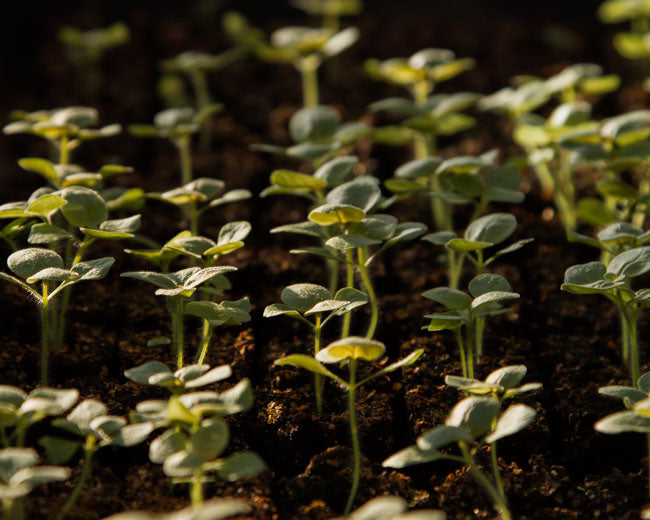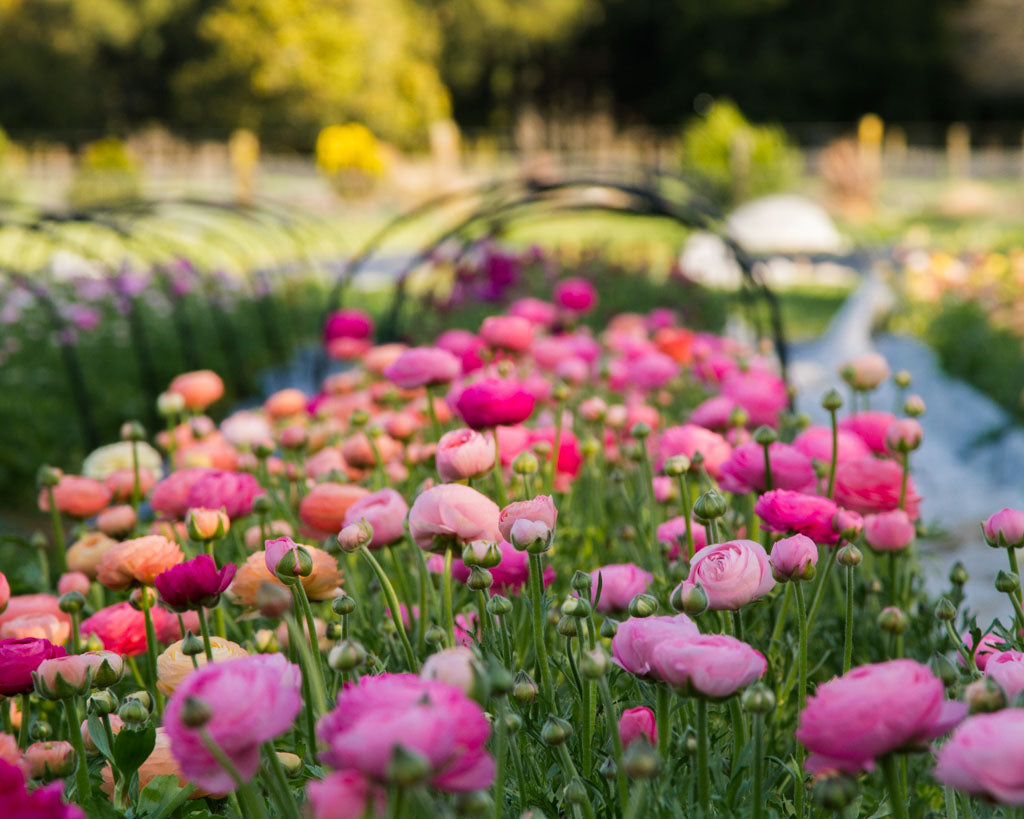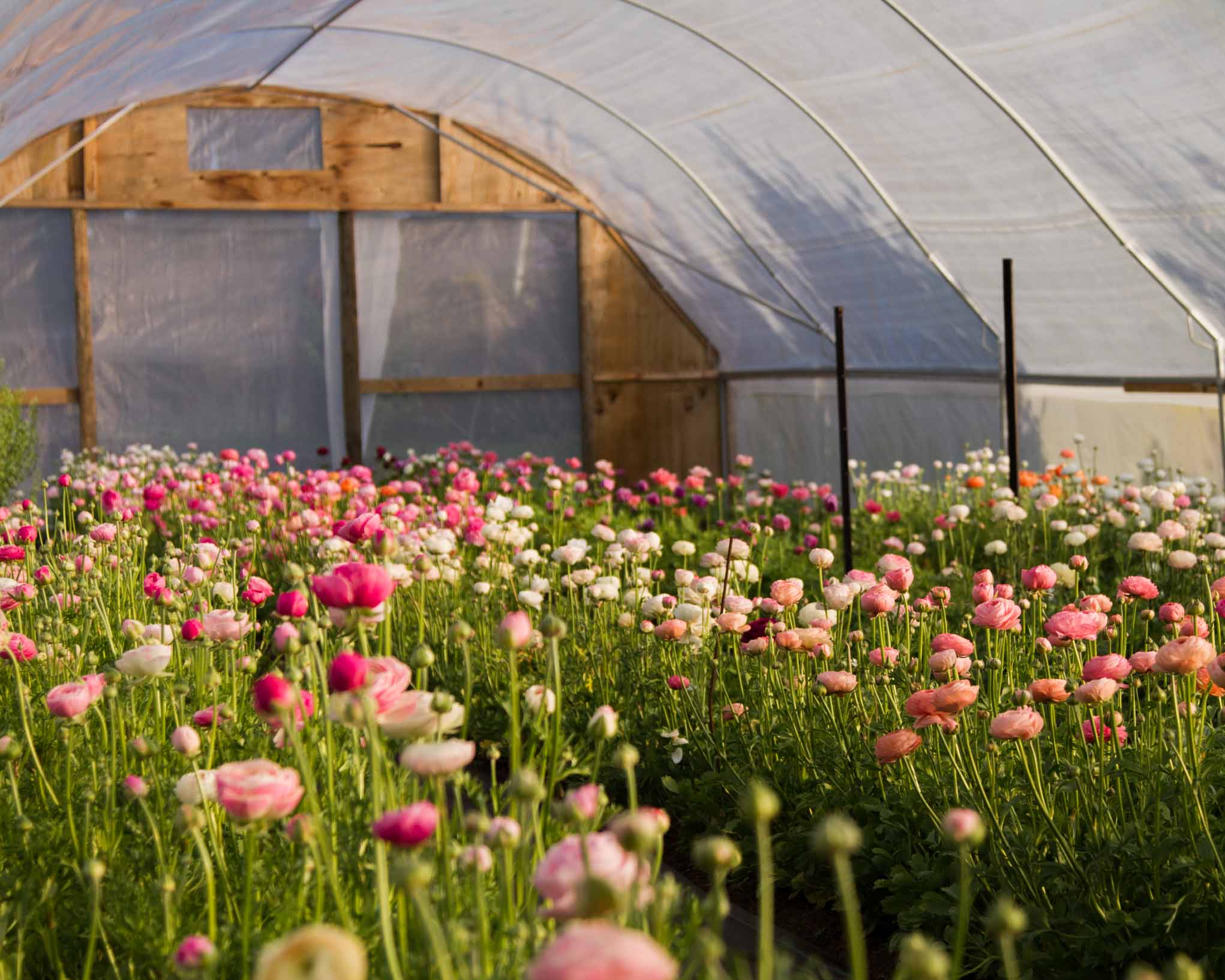How to grow Ranunculus
When to plant
Our ranunc plants are ready to be planted straight away, if you're not quite ready for them we recommend possibly potting them up to a bigger pot to buy yourself more time and not risk slowing them down at all - just make sure they don't fully dry out and if you can water less often but more thoroughly to encourage deeper roots and reduce algae growth which can be a problem during winter.
Where to plant
Plant in a mostly sunny spot, a little afternoon shade can help them flower for longer. Good airflow is important so make sure other plants aren't too close. Some shelter from rain is advised in wet regions or during wet spells for best flower quality, a little rain isn't a problem but when flowers can't dryout quickly it can affect flower quality.
Spacing
I plant my ranuncs 10cm apart in the row and about 20cm apart between rows (except when I've got more plants than space, then I squeeze the row spacing to fit an extra row per bed :).

Planting
Plant plants in a well drained soil, extra compost and bulb type fertilizer (with extra calcium if you can) mixed in. I usually just use my compost as a top layer mulch.
A pre-planting soaking in liquid seaweed + Superzyme, with a root dusting of mycorrhizal fungi helps set them up to be their healthiest selves.
Care
Ranuncs like a lot of babying - so I foliar spray every 10 or so days (weekly except for weeks we forget) a mixture of fish emulsion, liquid humates & calphos.
Keep plants well watered, but do allow the soil to breathe and dry on the surface to prevent algae growth. Drip irrigation is best but overhead is fine so long as it's done earlier in the day with plenty chance of drying off the foliage quickly.
A straw type mulch can be beneficial once the plants start budding up, in preparation for warmer spring temps - the mulch helping to insulate the soil from the worst heat. In hot spells make sure to keep plants well watered.

Disease
Ranuncs most common disease is Powdery Mildew, in NZ's warm humid climate it's almost a when not if it'll be a problem, so make sure you have a plan ready to go as soon as you see the first signs. I'm still tweaking my preferred methods of control. I have in the past just used the general purpose non-organic rose spray but due to powdery mildew being a bit more of a problem at my new farm I'm switching to more of a preventative organic system (Sentinel from BioForce after wincing over the price for a year or two!).
However you grow organic/non-organic do a quick google research pick your favourite method and be ready to nip it in the butt at the first sign as it can get out of control pretty fast. Once the plants are nearing the end of their flowering season I do just let it run it's course though.
Ranuncs can also get brown leaf spots which are more of water/wet foliage problem so make sure they have good air flow and keep babying them with all the good stuff.

Powdery Mildew on Ranunculus
Pests
Aphids are very fond of ranuncs! So need to be dealt to early before their population quickly explodes. So as soon as they’re leafed up and especially once buds are spotted, inspect them regularly for aphids and deal to them promptly—my favourite control is using predator insects from Bioforce before I even see the first aphid (Aphidius & Lacewings are my favourites).
Rabbits are also quite the ranunc lovers too so be ready for them if they're a problem for you.
Harvesting flowers
For the biggest best flowers harvest after the flowers have started to open their layers of petals (the official advice is to harvest after 3 days open - they open and close each day).

Saving corms
It is possible to save the corms at the end of the season to plant next year, but it's not always a reliable process.
If trying to save corms - after flowering let plants naturally die down, trying to keep them as dry as possible. Once their foliage has yellowed & faded fully they're ready to lift up. Once lifted trim the stalks back to the base of the plants and let fully dry out and store in a warm dry place until autumn. Corms can be replanted from about April to May.




Learn more about why we essentially have to grow ranuncs from seeds/plants vs corms in NZ



